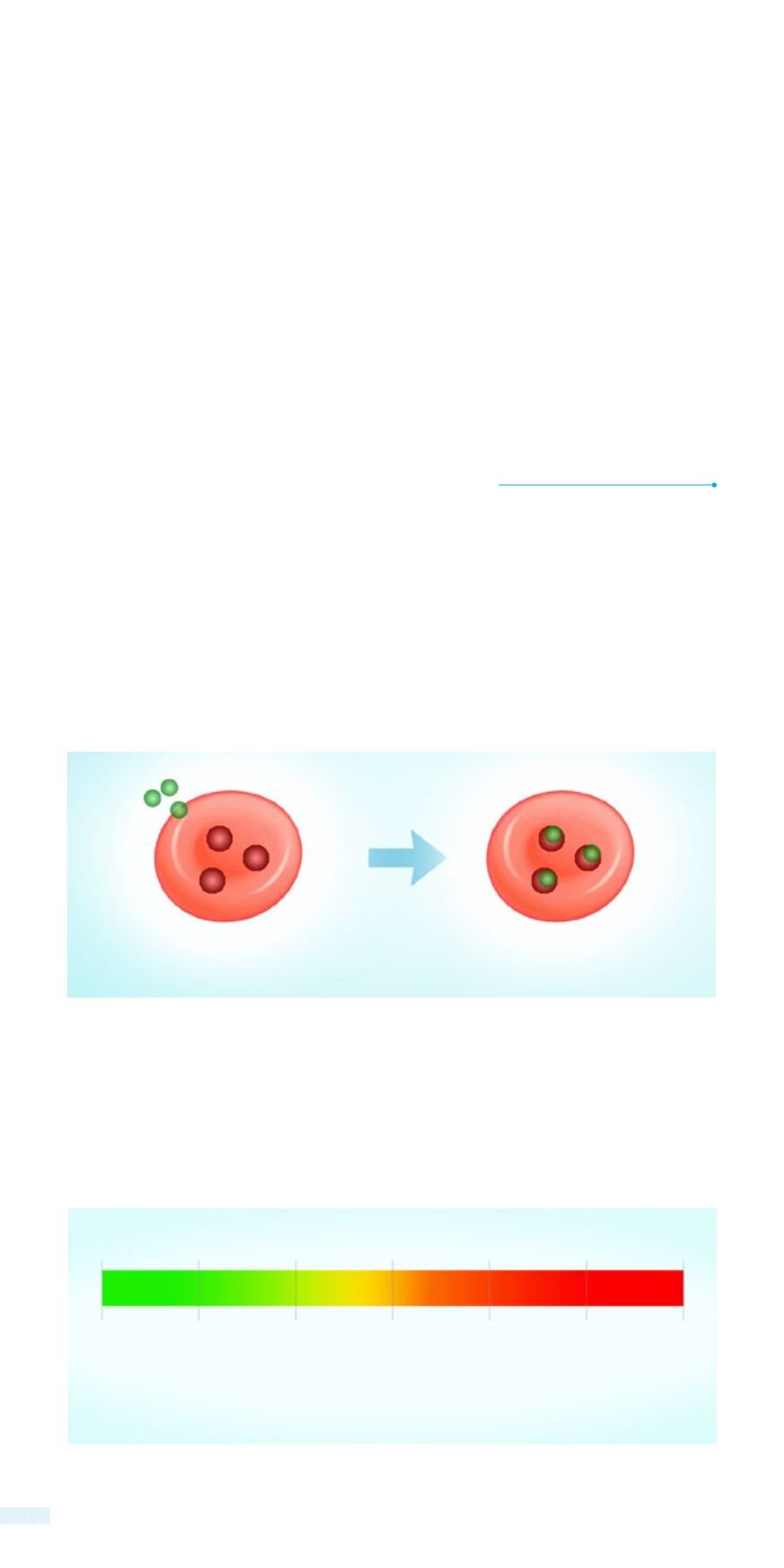
4
In the past few years, it has been proved that the amount of sugar in
the blood alone is not enough to diagnose diabetes because of the
fluctuation of blood sugar with food intake.
Glycosylated hemoglobin (HbA1c) is the result of binding hemoglobin
with glucose and coincides with the average blood glucose in the
last 3 months.
Glycosylated hemoglobin (HbA1c) and its
importance for diabetic regulation
also the amount of time that the patient was undiagnosed. 80%
of patients with diagnosed diabetes of over 10 years duration, and
nearly all patients with diabetes for 25 years duration, will suffer
from diabetic retinopathy.
90% of the cases with diabetic retinopathy might have avoided
vision loss by having a yearly eye examination. The proper regulation
of blood sugar is of the utmost importance (the higher the blood
sugar the higher the risk).
© 2015 ATHENS EYE HOSPITAL - NIKOLAOS PAPAZOGLOU M.D.
Glycosylated
Haemoglobin
Haemoglobin
Red blood cells
(life span 120 days)
Glucose
© 2015 ATHENS EYE HOSPITAL - NIKOLAOS PAPAZOGLOU M.D.
Evaluating the average value of blood sugar based on
glycosylated hemoglobin (mg/dL)
5% 6% 7%
8%
9% 10% 11%
280
250
215
180
150
115
80
This measurement is independent of food intake and is performed
with a simple blood test. If the patient has other health problems,
i.e. anemia, high blood pressure, high cholesterol or is a smoker, the
danger is increased.


